Examples of speed and agility drills

Speed and agility are essential components of many sports and physical activities. Improving these abilities can help individuals perform better and reduce the risk of injury. There are various drills and exercises that can be used to enhance speed and agility, and in this article, we will explore some examples.
One common drill is the ladder drill, which involves running through a set of ladder rungs laid out on the ground. This exercise helps improve foot speed and coordination. Another popular drill is the cone drill, where athletes sprint to different cones placed in a zigzag pattern. This drill enhances quick direction changes and agility.
Another effective drill is the shuttle run, which consists of sprinting back and forth between two markers placed a specific distance apart. This exercise is beneficial for improving both speed and endurance. Additionally, the box drill is useful for improving lateral movement and quickness. It involves moving around a square or rectangular pattern marked by cones.
It is important to remember that while these drills can be beneficial, they should be performed with proper form and technique to avoid injury. It is also recommended to start with appropriate warm-up exercises and gradually increase the intensity and difficulty of the drills. By incorporating these speed and agility drills into a training routine, athletes and individuals can enhance their performance and improve their overall physical fitness.
Speed and Agility Drills Examples
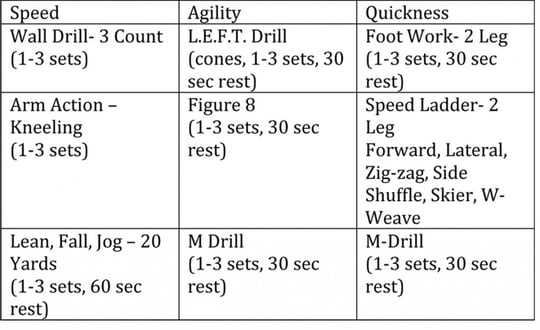
1. Shuttle Run
The shuttle run is a popular drill used to improve speed and agility. To perform this drill, set up two markers about 10-20 yards apart. Start at one marker and sprint to the other, touching the line with one hand. Then quickly change direction and sprint back to the starting point, again touching the line. Repeat this back and forth movement for a set amount of time or repetitions.
2. Ladder Drills
Ladder drills are a great way to improve footwork and agility. Lay an agility ladder on the ground and perform various exercises such as high knees, lateral shuffles, and quick feet. The ladder helps to create a visual cue and challenges you to move your feet quickly and accurately.
3. Cone Drills
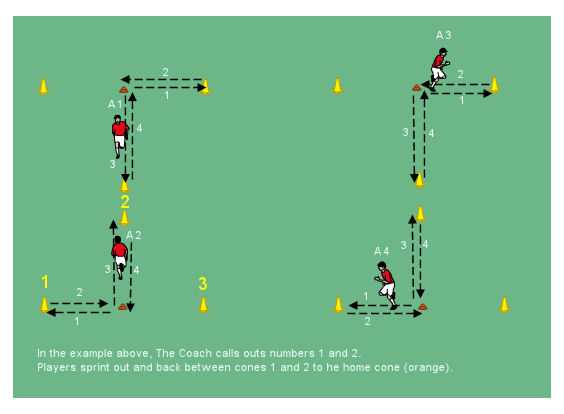
Cone drills are another effective way to improve speed and agility. Set up cones in a straight line or in various patterns such as a zigzag or T-shape. Sprint forward, weaving in and out of the cones. You can also perform lateral movements or backpedal around the cones to work on different aspects of agility.
4. Reactive Agility Drills
Reactive agility drills are designed to improve your ability to quickly react and change direction in response to visual or auditory cues. Set up cones or markers in a random pattern and have a partner call out a color or number for you to touch or sprint to. React as quickly as possible and change direction to reach the designated marker.
5. Plyometric Exercises
Plyometric exercises are explosive movements that help improve power and speed. Exercises such as box jumps, lateral bounds, and depth jumps can be incorporated into your speed and agility training. These exercises challenge your muscles to generate maximum force in a short amount of time, which translates to improved speed and agility on the field or court.
6. Resistance Sprints
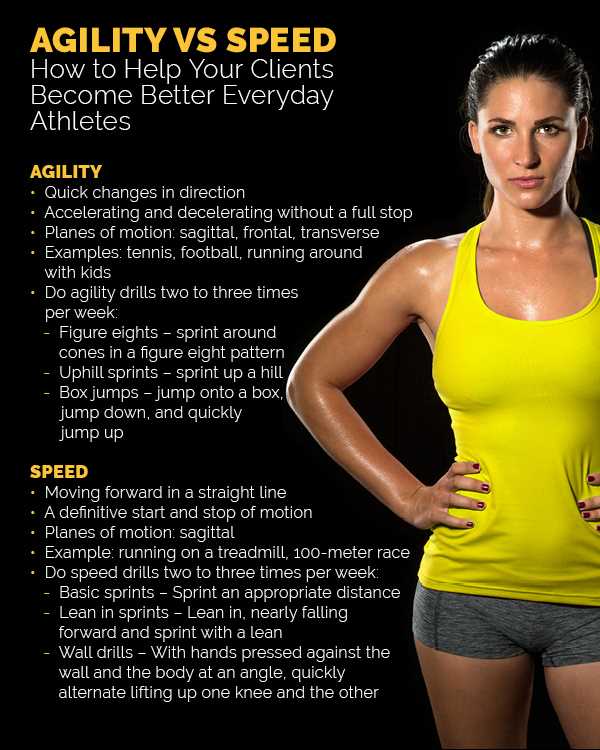
Resistance sprints involve sprinting while wearing a resistance band or using a sled. The added resistance helps to build strength and power in your lower body, which translates to improved speed and explosive acceleration. Perform sprints of varying distances, focusing on maintaining proper form and technique despite the added resistance.
7. T-Drill
The T-drill is a popular agility drill used in many sports. Set up four cones in the shape of a T, with one cone at the top and three cones in a line below it. Start at the top cone and sprint forward to the middle cone, then quickly change direction and shuffle to the left or right cone. Shuffle back to the middle cone and sprint backwards to the starting cone. This drill helps to improve acceleration, deceleration, and change of direction.
8. Mirror Drills
Mirror drills involve partnering up with another athlete and mimicking their movements. One person leads while the other person mirrors their actions, trying to stay as close as possible. This drill helps to improve reaction time, agility, and coordination as you have to quickly adjust your movements based on your partner’s actions.
9. Hurdle Drills
Hurdle drills are a great way to improve agility and coordination. Set up a series of hurdles at varying heights and distances. Practice jumping over the hurdles with proper technique, focusing on quick takeoff and landing. This drill helps to improve your ability to quickly change direction and navigate obstacles with speed.
10. Multi-Directional Sprints
Multi-directional sprints involve sprinting in various directions such as forward, backward, sideways, and diagonally. Set up cones or markers in different patterns and sprint to each marker, changing direction as quickly as possible. This drill helps to improve your ability to quickly change direction and react to different movement cues.
| Drill | Benefits |
|---|---|
| Shuttle Run | Improves speed and change of direction |
| Ladder Drills | Improves footwork and agility |
| Cone Drills | Improves speed, agility, and lateral movement |
| Reactive Agility Drills | Improves reaction time and quick change of direction |
| Plyometric Exercises | Improves power and explosive speed |
| Resistance Sprints | Builds lower body strength and power for improved speed |
Sprinting and Quick Feet
Sprinting and quick feet exercises help to improve speed and agility on the field or court. These drills focus on developing the muscles and techniques needed for explosive acceleration and rapid changes in direction.
1. Shuttle Runs
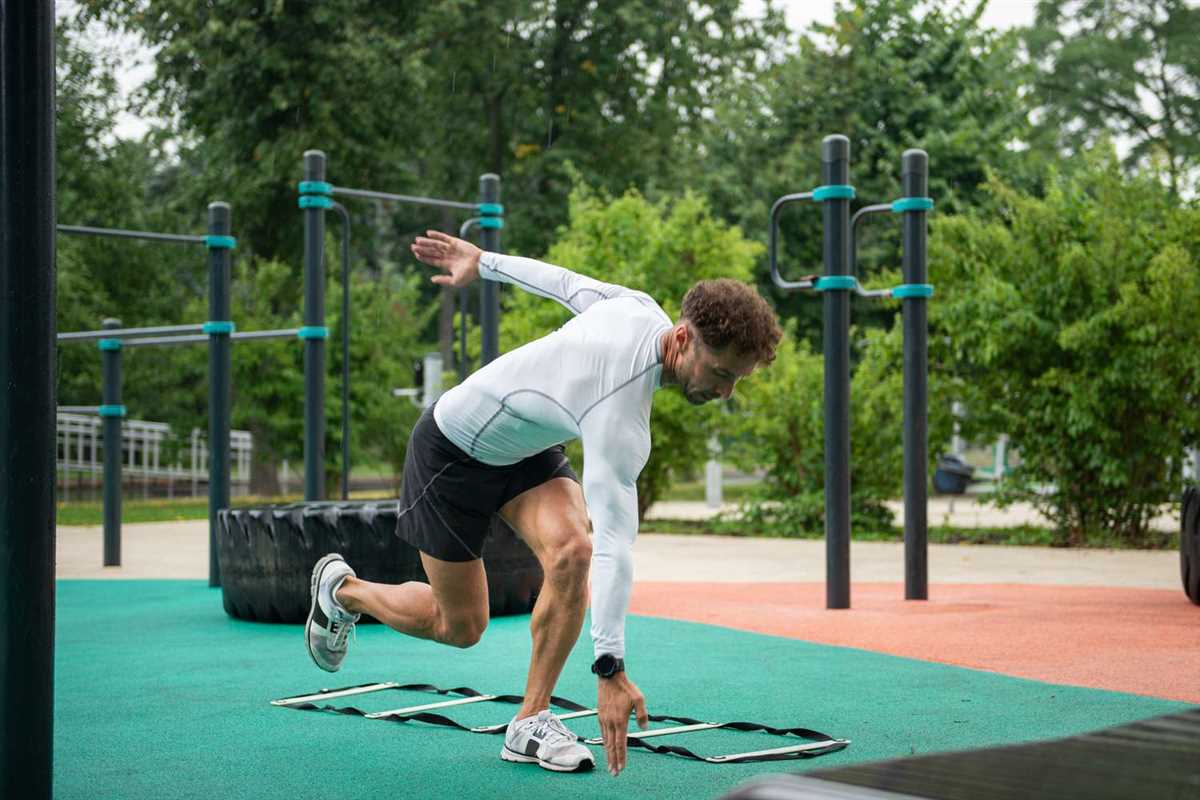
Shuttle runs are a classic sprinting drill that helps improve both speed and agility. Set up two cones or markers approximately 10-20 yards apart. Start at one end and sprint to the other, touching the ground at the turnaround point. Repeat for a set number of repetitions or time.
2. High Knees
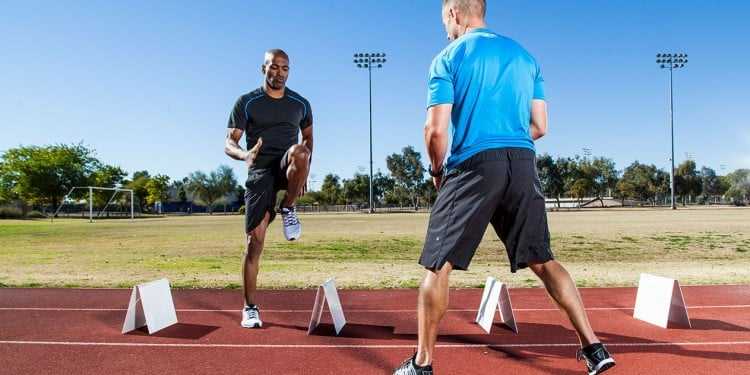
High knees are a great drill for developing quick feet and improving stride length. Stand tall with your chest up and march on the spot, driving your knees up towards your chest as high as possible. Pump your arms and maintain a quick and steady pace. Repeat for a set distance or time.
3. Ladder Drills
Ladder drills are excellent for improving footwork, coordination, and speed. Set up a speed ladder on the ground and perform various drills such as the two-foot hop, lateral shuffle, and quick feet. Focus on maintaining a fast pace and precise footwork throughout the drills.
4. Sprint Intervals
Sprint intervals involve alternating between short bursts of maximum effort sprints and periods of active recovery. For example, sprint at maximum effort for 20 seconds, followed by 40 seconds of jogging or walking. Repeat for a set number of repetitions or time.
5. Agility Cone Drill
The agility cone drill helps improve both speed and agility. Set up a series of cones in a zigzag pattern. Begin at one end and sprint to the first cone, then quickly change direction and sprint to the next cone. Repeat the pattern until you reach the end of the course.
6. Box Jumps
Box jumps are a plyometric exercise that increases explosive power and leg strength. Find a sturdy box or platform and stand in front of it. Jump onto the box, landing softly with your knees slightly bent. Step or jump back down and repeat for a set number of repetitions.
7. Tuck Jumps
Tuck jumps are another plyometric exercise that helps improve explosive power and leg strength. Start with your knees slightly bent and jump as high as possible while bringing your knees up towards your chest. Land softly with your knees slightly bent and immediately jump again. Repeat for a set number of repetitions.
Remember to warm up properly before performing any speed and agility drills and to focus on proper technique and form throughout each exercise. These drills can be incorporated into a training program to help athletes improve their speed, agility, and overall performance.
Ladder Drills for Agility
Ladder drills are a great way to improve agility and quickness. They help develop footwork, coordination, and speed. This article will explore some popular ladder drills that can be used to enhance agility.
1. Two Feet In
This is a basic ladder drill that focuses on quick footwork. Start at the bottom of the ladder facing forward. Step both feet into the first square, and then quickly step both feet out to the sides of the ladder, landing in the second square. Repeat this process, moving up the ladder as fast as possible.
2. Lateral In and Out
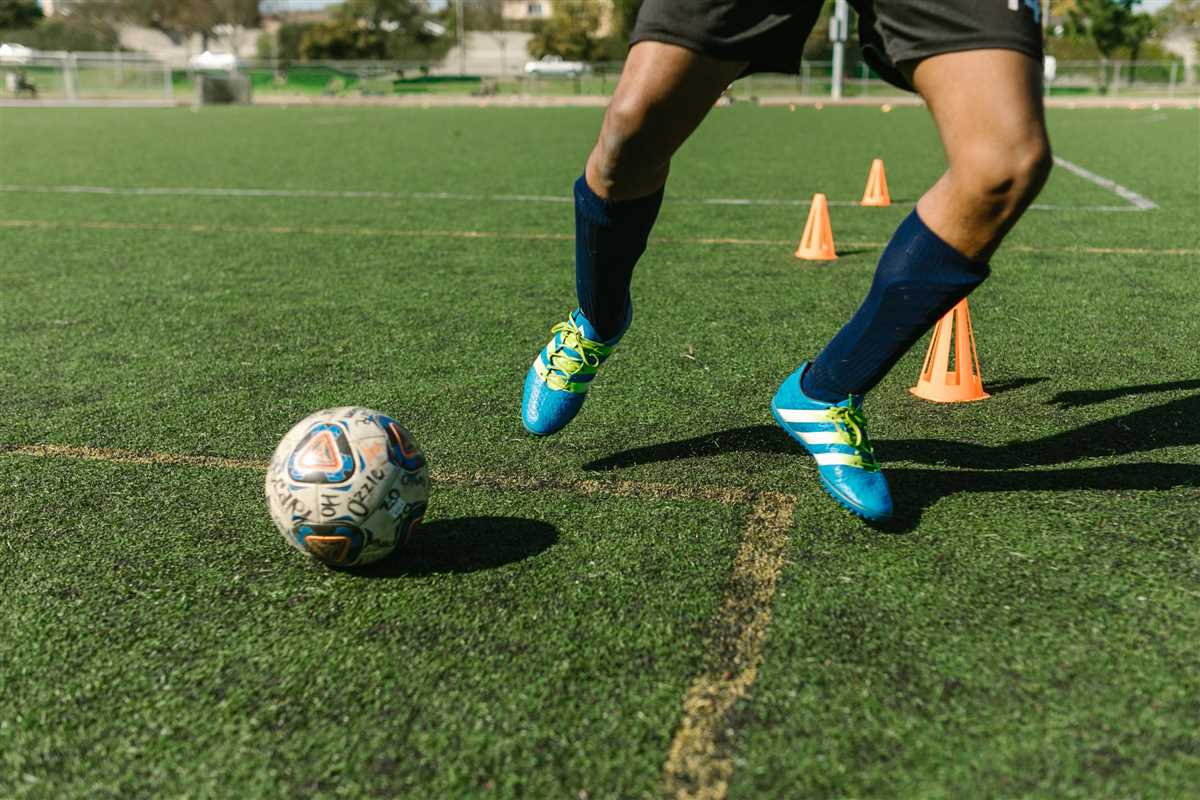
This drill is designed to improve lateral quickness. Start at the bottom of the ladder facing sideways. Step one foot into the first square, followed by the other foot. Then, step both feet out to the side of the ladder, landing in the second square. Repeat this sequence, moving up the ladder as quickly as possible.
3. One Foot In
This drill focuses on balance and coordination. Start at the bottom of the ladder facing forward. Step one foot into the first square, making sure to fully plant the foot inside the square. Then, bring the other foot up and step it into the square beside the first foot. Repeat this pattern, moving up the ladder.
4. Ickey Shuffle
The Ickey Shuffle drill is used to improve agility and change of direction. Start at the bottom of the ladder facing forward. Step one foot into the first square, followed by the other foot. Then, step the first foot outside the ladder to the left, and bring the other foot over to the left as well, placing it in the same square. Repeat this sequence, moving up the ladder.
These ladder drills can be done as part of a warm-up or incorporated into a speed and agility training program. Remember to start slow and focus on technique before increasing speed. With consistent practice, these drills can help athletes become more agile and quicker on their feet.
Cone Drills for Speed
Speed and agility are essential qualities for athletes in many sports, from football and basketball to soccer and track and field. Cone drills are a popular training tool that can improve an athlete’s speed, agility, and overall performance. Here are some examples of cone drills that can help you develop your speed:
1. Zigzag Drill
The zigzag drill is an excellent drill for improving agility and lateral speed. Set up several cones in a zigzag pattern, with each cone about 5 yards apart. Start at one end of the pattern and sprint to the first cone, then quickly change direction and sprint to the next cone. Continue this zigzag pattern, focusing on quick changes of direction and explosive acceleration.
2. T-Drill
The T-drill is a classic agility drill that can improve your speed, quickness, and change of direction. Set up four cones in the shape of a T, with one cone at the top and three cones forming a line at the bottom. Start at the top cone, sprint down to the middle cone, then shuffle to the left or right cone, sprint back to the middle cone, and finish by sprinting back to the starting cone. Repeat the drill, alternating the direction you shuffle to each time.
3. Lateral Shuffle Drill
The lateral shuffle drill is a great drill for improving lateral speed and agility. Set up two cones about 10 yards apart. Start at one cone and shuffle laterally to the other cone as quickly as possible. Touch the cone with your hand, then immediately shuffle back to the starting cone. Repeat the drill, focusing on quick, explosive movements and maintaining a low stance for optimal agility.
4. Box Drill
The box drill is an advanced cone drill that can improve your agility, speed, and body control. Set up four cones in a square shape, with each cone about 10 yards apart. Start at one cone and sprint diagonally to the opposite cone, then shuffle laterally to the next cone, backpedal to the next cone, and finally shuffle laterally back to the starting cone. Repeat the drill, focusing on quick changes of direction and maintaining proper form throughout.
5. Figure 8 Drill
The figure 8 drill is a fun and challenging cone drill that can improve your speed, agility, and coordination. Set up two cones about 5 yards apart. Start at one cone and sprint in a figure 8 pattern around both cones, focusing on quick changes of direction and accelerating out of each turn. Repeat the drill, trying to complete the figure 8 pattern as quickly as possible while maintaining control.
Conclusion
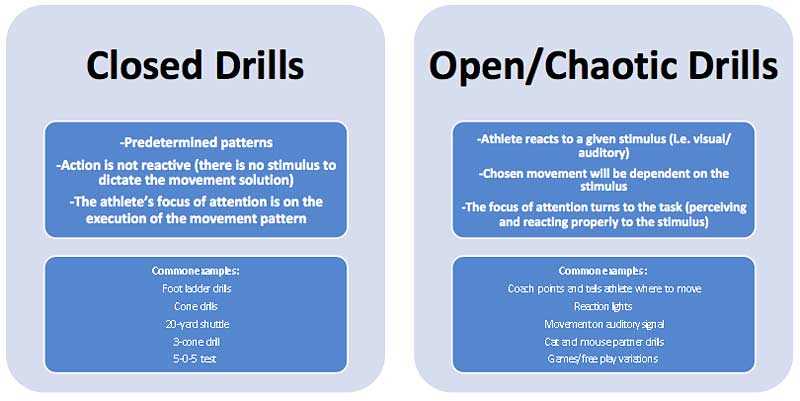
Cone drills are an effective training tool for improving speed and agility. Incorporate these drills into your training routine to enhance your performance in any sport that requires quick movements and changes of direction. Remember to warm up properly before performing these drills and always focus on maintaining proper form to minimize the risk of injury.
Shuttle Runs for Quickness
Shuttle runs are a popular speed and agility drill used to improve quickness and acceleration. They involve sprinting back and forth between two points, testing your ability to change direction rapidly and maintain speed.
How to Perform Shuttle Runs
- Mark two points on the ground approximately 10 meters apart.
- Start at one point and sprint to the other as fast as possible.
- Touch the ground or a cone at the end point, then immediately change direction and sprint back to the starting point.
- Repeat the shuttle run for the desired number of repetitions or time.
Variations of Shuttle Runs
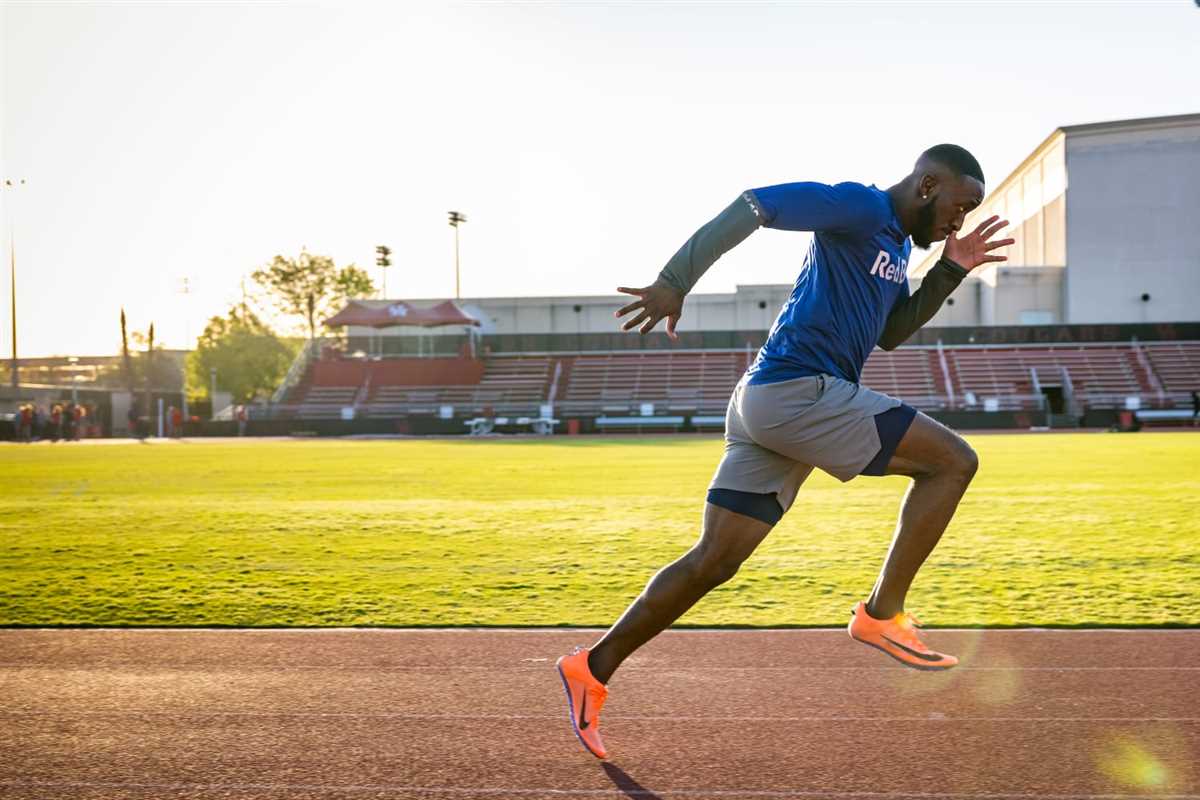
There are several variations of shuttle runs that can be used to target different aspects of speed and agility:
- One-Legged Shuttle Runs: Instead of using both legs, perform the shuttle runs on one leg. This challenges your balance and strengthens the muscles involved in quick changes of direction.
- Lateral Shuttle Runs: Instead of running forward and backward, perform the shuttle runs by moving laterally. This targets your ability to quickly change direction from side to side.
- Reaction Shuttle Runs: Have a partner or coach call out directions randomly, such as “left” or “right,” as you’re performing the shuttle runs. This helps improve your reaction time and agility.
Benefits of Shuttle Runs
Shuttle runs are an effective drill for improving quickness and agility because they mimic the movements required in many sports and activities. By regularly incorporating shuttle runs into your training routine, you can expect to experience the following benefits:
- Increased speed and acceleration
- Improved change-of-direction ability
- Enhanced agility and coordination
- Better reaction time
Conclusion
Shuttle runs are a versatile and effective drill for improving quickness and agility. Whether you’re an athlete looking to enhance your performance or someone who simply wants to improve their overall fitness, incorporating shuttle runs into your training routine can help you reach your goals.
Hurdle Hops for Explosiveness
Hurdle hops are an effective drill for improving speed and agility by increasing explosiveness and power in the lower body. This drill involves jumping over a series of hurdles, forcing the athlete to generate maximum force and explosiveness with each jump.
Equipment Needed

- Hurdles
- Timer (optional)
Instructions
- Set up a series of hurdles in a straight line, spaced apart according to your desired difficulty level.
- Stand with your feet shoulder-width apart, facing the first hurdle.
- Bend your knees and jump explosively, using your arms to generate momentum.
- Aim to clear the hurdle with both feet, landing softly on the balls of your feet.
- Immediately jump over the next hurdle, repeating the same explosive motion.
- Continue jumping over each hurdle in succession, maintaining a quick and explosive pace.
- Complete the desired number of repetitions or a set time duration.
Tips
- Start with lower hurdles and gradually increase the height as you become more comfortable and confident.
- Focus on generating power from your lower body by fully extending your hips and legs with each jump.
- Keep your core engaged and your gaze forward to maintain balance and stability.
- Practice proper landing technique by landing softly on the balls of your feet, absorbing the impact with your muscles.
- Use a timer to track your progress and challenge yourself to improve your speed and explosiveness over time.
Hurdle hops can be incorporated into your regular training routine to enhance your speed, agility, and explosiveness. By consistently performing this drill, you can develop stronger muscles, improve your jumping ability, and increase your overall athletic performance.
Box Jumps for Power
Box jumps are a popular exercise for improving power and explosiveness. They are an effective way to train your lower body muscles, including your quads, hamstrings, and glutes. Box jumps can help increase your vertical jump, speed, and agility.
How to Perform Box Jumps
To perform box jumps, follow these steps:
- Start by standing in front of a sturdy box or platform that is at an appropriate height for your fitness level.
- Stand with your feet shoulder-width apart.
- Bend your knees and lower your body into a quarter squat position.
- Quickly explode upward, extending your hips, knees, and ankles.
- Drive your arms forward to generate more power.
- Land softly on the box, bending your knees to absorb the impact.
- Step back down or jump back down to the starting position.
Tips for Box Jumps
Here are some tips to keep in mind when performing box jumps:
- Choose a box height that challenging but still allows you to safely land and take off.
- Focus on explosiveness and speed rather than height. Gradually increase the box height as you become more comfortable and proficient.
- Make sure to land with your knees bent to absorb the impact and reduce the risk of injury.
- Keep your core engaged throughout the movement to maintain stability and control.
- Start with a lower number of repetitions and gradually increase as you build strength and conditioning.
Variations of Box Jumps
Once you have mastered the basic box jump, you can challenge yourself by trying different variations, such as:
- Box jump with a 180-degree turn: After jumping onto the box, quickly jump off and rotate your body 180 degrees before jumping back onto the box.
- Single-leg box jump: Perform the jump using only one leg. This variation helps improve balance and stability.
- Depth jumps: Instead of starting from a standing position, start by stepping off a box and immediately jumping onto a higher box as soon as your feet touch the ground.
Remember to always warm up properly before attempting box jumps to prevent injuries. Consult with a fitness professional if you have any concerns or pre-existing conditions that may affect your ability to perform this exercise.
| Benefits | Considerations |
|---|---|
|
|
Agility ladder exercises
Agility ladder exercises are a great way to improve speed, coordination, and agility. They involve performing various footwork drills in a ladder-like pattern on the ground. These exercises can be beneficial for athletes in many sports, including football, soccer, basketball, and tennis.
Here are some popular agility ladder exercises:
- Lateral shuffle: Stand beside the ladder and quickly step into the first square with your lead foot, followed by your trailing foot. Then, move both feet to the next square laterally. Continue this lateral shuffle motion through the entire ladder.
- 1-2 step: Start at one end of the ladder and step with one foot into the first square, followed by the other foot. Then, step with the first foot outside the ladder, followed by the other foot. Repeat this 1-2 step pattern through the entire ladder.
- In-and-out: Begin at one end of the ladder and step into the first square with one foot. Then, quickly step outside the ladder with that foot and back into the next square with the same foot. Repeat this in-and-out motion with each foot as you move through the ladder.
- High knees: Stand at one end of the ladder and jog through it, lifting your knees up towards your chest as high as possible with each step. Focus on maintaining a quick pace and proper form throughout the exercise.
- Single-leg hop: Stand beside the ladder and while balancing on one leg, hop into the first square with that foot. Then, hop to the next square with the same foot. Continue hopping with the same foot through the entire ladder, then switch to the other leg.
These agility ladder exercises can be performed as a warm-up before a workout or used as a standalone agility training session. They can also be combined with other speed and agility drills for a more comprehensive training program. Remember to start with a slow tempo and gradually increase speed as you become more comfortable with the exercises. Don’t forget to maintain proper form and focus on quick, precise movements.
| Exercise | Description |
|---|---|
| Lateral shuffle | Quickly step into each square laterally, moving through the entire ladder. |
| 1-2 step | Step into each square with one foot, followed by the other foot. Step outside the ladder with the first foot, followed by the other foot. |
| In-and-out | Step into each square with one foot, then quickly step outside the ladder with that foot and back into the next square. Repeat with the other foot. |
| High knees | Jog through the ladder, lifting your knees up as high as possible with each step. |
| Single-leg hop | Balance on one leg and hop into each square, then switch to the other leg. |
Resistance training for Speed and Agility
Resistance training is an effective way to improve speed and agility. By adding resistance to your workouts, you can challenge your muscles to work harder, resulting in increased power and explosiveness. Here are some examples of resistance training exercises that can help improve speed and agility:
Sled Drags
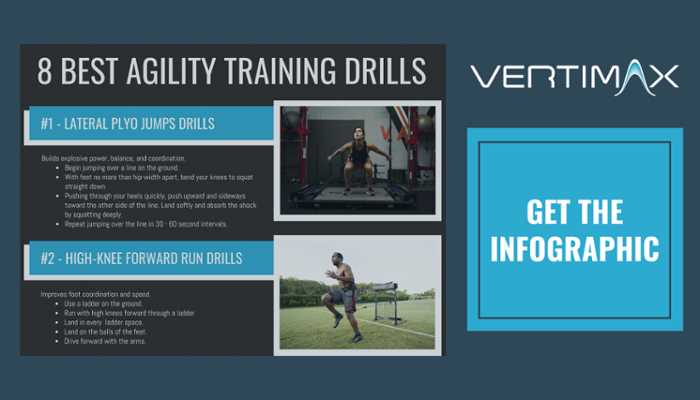
Sled drags are a great way to build strength and improve speed. Attach a sled or a weight plate to a harness and drag it behind you as you run or sprint. This exercise targets the muscles in your legs and hips, helping to increase your stride length and power.
Resistance Bands
Resistance bands are versatile tools that can be used to target specific muscle groups and improve speed and agility. You can use them to add resistance to exercises such as squats, lunges, and lateral movements. By doing these exercises with resistance bands, you can increase the strength and stability of your muscles, which will improve your speed and agility.
Weighted Vest
Wearing a weighted vest while performing speed and agility drills can help build strength and increase your explosive power. The additional weight provides resistance for your muscles, making them work harder and resulting in improved speed and agility.
Hurdle Jumps
Hurdle jumps are a great exercise for improving agility. Set up a series of hurdles and practice jumping over them quickly and efficiently. To add resistance to this exercise, you can wear ankle weights or hold dumbbells in your hands. This will make your muscles work harder and help improve your explosive power.
Medicine Ball Throws
Medicine ball throws are a dynamic exercise that can help improve your speed and agility. Grab a medicine ball and perform exercises such as overhead throws, chest passes, and rotational throws. These exercises engage your core, upper body, and lower body muscles, improving your overall power and explosiveness.
Remember to start with lighter resistance and gradually increase as your strength improves. Resistance training for speed and agility should be done under the guidance of a qualified trainer and should be part of a well-structured training program.
FAQ:
What are some examples of speed and agility drills that can be done at home?
There are several speed and agility drills that can be done at home to improve your overall athletic performance. Some examples include ladder drills, shuttle runs, cone drills, and plyometric exercises like squat jumps and burpees. These exercises can help improve your speed, agility, and overall athleticism.
How can speed and agility drills benefit athletes?
Speed and agility drills can benefit athletes in several ways. Firstly, these drills can help improve an athlete’s overall speed and quickness, allowing them to perform better in their respective sports. Additionally, these drills can help improve an athlete’s coordination, balance, and reaction time, which are all important aspects of athletic performance. Finally, speed and agility drills can help prevent injuries by improving an athlete’s body control and ability to change direction quickly.
Are speed and agility drills only beneficial for athletes?
No, speed and agility drills are not just beneficial for athletes. While these drills are commonly used in sports training, they can also be useful for individuals looking to improve their overall fitness levels. Speed and agility drills can help improve cardiovascular endurance, burn calories, and increase muscle tone. Additionally, these drills can be a fun and challenging way to switch up your workout routine.
What equipment is needed for speed and agility drills?
Many speed and agility drills can be done without any equipment, using only your body weight and a small amount of space. However, there are certain drills that may require specific equipment, such as agility ladders, cones or markers, and resistance bands. These tools can help enhance the effectiveness of the drills and provide additional challenges.
Can speed and agility drills help improve sprinting ability?
Yes, speed and agility drills can definitely help improve sprinting ability. Sprinting requires a combination of speed, power, and coordination, which are all components that can be targeted and improved through specific drills. By incorporating speed and agility drills into your training routine, you can work on increasing your stride length, improving your acceleration, and enhancing your overall sprinting technique.
How often should speed and agility drills be performed?
The frequency of speed and agility drills will depend on your fitness level, goals, and training schedule. However, it is generally recommended to incorporate these drills into your training routine at least 2-3 times per week. Incorporating a variety of drills and gradually increasing the intensity and difficulty over time can help ensure continuous improvement in speed and agility.
Are there any warm-up exercises recommended before performing speed and agility drills?
Yes, it is important to properly warm up your body before performing speed and agility drills to prevent injuries. A warm-up should include dynamic stretching exercises to increase blood flow to the muscles and improve the range of motion. Some examples of warm-up exercises include jogging, high knees, butt kicks, leg swings, and arm circles. Additionally, it’s also a good idea to perform some light cardio exercises to increase your heart rate and warm up your entire body.
Video:











